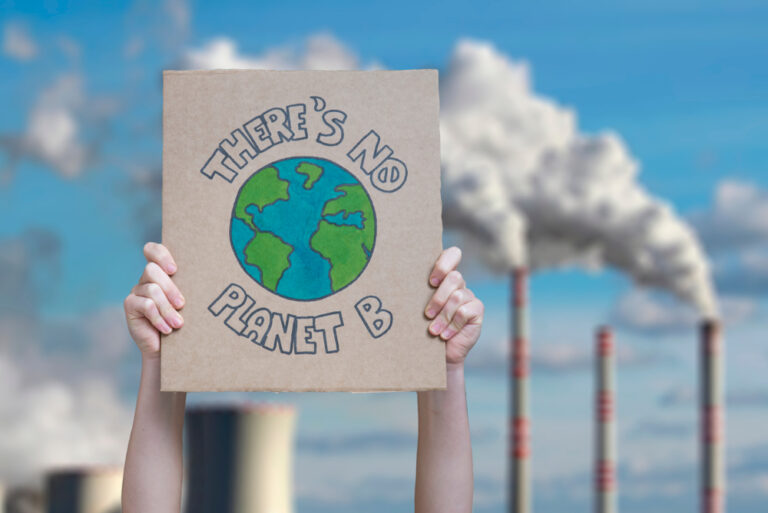President Joseph Biden Jr.’s Executive Order (EO) 14008 calls on all federal agencies to use a whole-of-government approach to tackle the climate crisis. In keeping with this directive, the EPA recently announced its Climate Enforcement and Compliance Strategy, which directs all enforcement and compliance programs to address climate change, wherever appropriate, in every matter within their jurisdiction.

“To meet this challenge, EPA’s Office of Enforcement and Compliance Assurance will incorporate where appropriate climate-related solutions and measures to reduce, prevent, and prepare for the impacts of climate change in its criminal, civil, cleanup, and federal facility enforcement actions,” says an Agency news release.
“The threats posed by climate change have never been greater, as we mark the warmest year on record, with more billion-dollar weather events than any year in U.S. history,” said Assistant Administrator David M. Uhlmann for the EPA’s Office of Enforcement and Compliance Assurance in the Agency news release. “EPA’s climate enforcement and compliance strategy reflects the urgency of holding polluters accountable for unlawful emissions that contribute to climate change, as well as the importance of incorporating climate resilience and adaptation requirements in our cases. These efforts are particularly necessary in overburdened and marginalized communities that are on the frontlines of the climate crisis.”
The Climate Strategy directs all EPA criminal, civil, cleanup, and federal facilities activities to apply the following:
- Prioritize enforcement and compliance actions to mitigate climate change.
- Include climate adaptation and resilience requirements in case conclusions whenever appropriate.
- Provide technical assistance to achieve climate-related solutions and build climate change capacity among EPA staff and its state and local partners.
This strategy builds upon the EPA’s recent announcement of the Agency’s first national enforcement and compliance initiative (NECI) on climate change, which will target methane emissions from oil and gas facilities and landfills.
The NECI also targets the illegal importation of hydrofluorocarbons (HFCs) in violation of the American Innovation and Manufacturing (AIM) Act, which phases down production and consumption of HFCs—consistent with the Kigali Amendment.
The Climate Enforcement and Compliance Strategy takes the NECI a step further “by requiring EPA’s enforcement and compliance programs to fairly and vigorously enforce the full array of EPA’s current and future climate rules, including, but not limited to, greenhouse gas (GHG) reporting requirements and limits on other climate pollutants, such as carbon dioxide and nitrous oxide,” the EPA news release adds.
In addition, the strategy directs EPA staff to “embrace climate-related solutions, whenever appropriate … so that entities in both criminal and civil enforcement matters factor climate mitigation, adaptation, and resilience into their operations.”
Industry takeaways
Considering this announcement, industry should be prepared for:
- Increased prioritization from the EPA for compliance and enforcement actions regarding climate change, which will include additional information requests, inspections, and more enforcement actions, particularly for high GHG emitters. Although the oil and gas industry is currently specifically targeted, any facilities with high GHG emissions will be subject to increased scrutiny.
- “Enforcement demands will likely include higher penalties, compared to other non-GHG-driven cases, more GHG-related injunctive relief, as well as more climate adaptation and resilience requirements,” advises The National Law Review. “This relief could include more fence-line monitoring or flare gas reductions or recovery, among other priorities.”
- These injunctive relief measures won’t be limited to Clean Air Act (CAA) initiatives. The National Law Review foresees “a renewed emphasis on green remediation technologies at Superfund and Resource Conservation and Recovery Act (RCRA) corrective action sites, as well as a push for green infrastructure, resiliency planning, and stormwater management enhancements in Clean Water Act (CWA) settlements.”
- Increased EPA scrutiny of GHG emissions reports, meaning the preparation of these reports should be carefully reviewed to ensure compliance with the reporting regulations.
- “EPA will be interested in Supplemental Environmental Projects (SEPs) that reduce GHGs,” according to The National Law Review. “Consider clean and renewable energy projects or other GHG mitigation projects as part of any strategy to resolve an enforcement case, particularly if the penalty demand is large.”
- Facilities located near environmental justice communities are advised to plan for additional increased vigilance from the EPA.